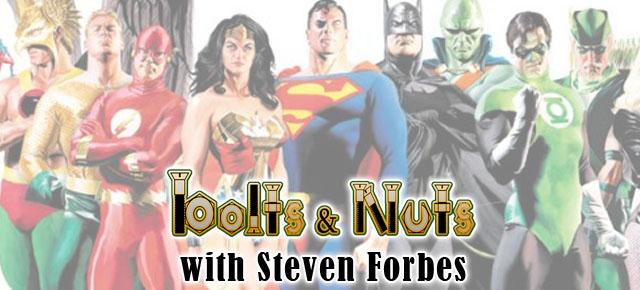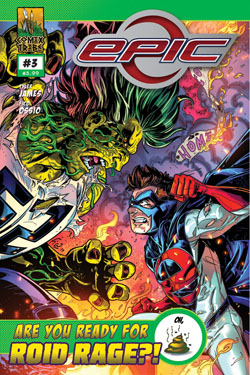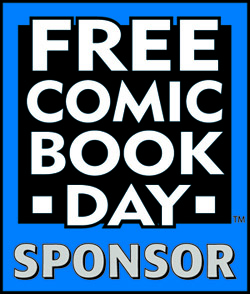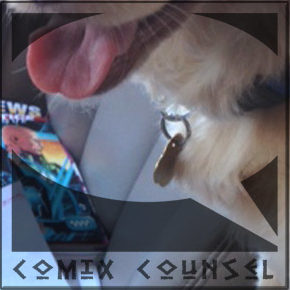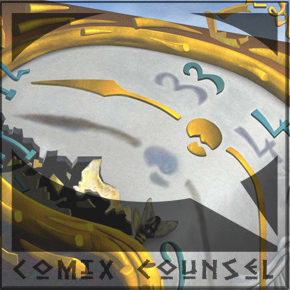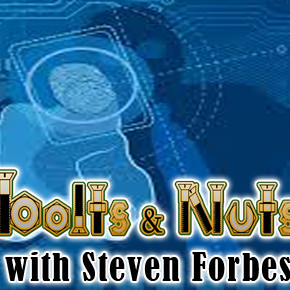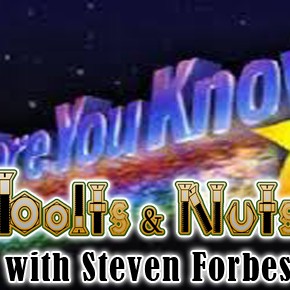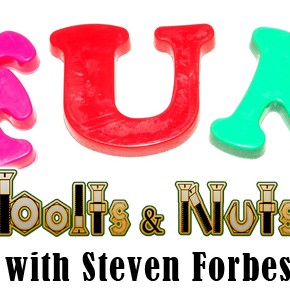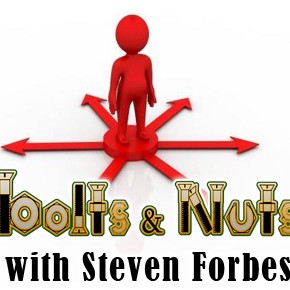B&N Week 128: What Are You Building?
It’s another hot Tuesday! That’s all I’ve got for an intro. It’s hot. I look out the window, and I see the heat. It’s taunting me, like a bully. And I’m the skinny kid, too afraid to go out in the yard and play. Because it’s hot. Air conditioning is a must in Tucson. I don’t see how early settlers made it. [Then again, early settlers didn’t have asphalt holding and concentrating the heat.]
This week, I wanted to ask a question: what are you building?
It’s a simple question. Almost deceptive, isn’t it? What are you building? For many of us, the answer is a career. And to have a career in comics is an awesome thing to achieve. That’s something that we all want, and for some of us, that’s the goal. That’s enough. For some of us, if we’re lucky enough, that’s all we’ll ever have. A career in comics.
Don’t get me wrong, and don’t think I’m looking down on any creator, their art, their effort, or what they bring to the table. When you’re creating a comic, every job is important, and nothing is to be overlooked or taken for granted. However, when looking at the question what are you building, the answer for some of us can only be a career.
And do you know what a career gets you? Steady work. The respect of your peers. Money to put a roof over your head, food on the table, and to get other necessities of life. A career, depending on how much effort you put into it, will allow you to live comfortably.
There’s the other shoe, though. Editors, inkers, colorists, and letterers what happens when our careers are over? Editors, we can work for a long time. As long as we have our faculties, we can work. Letterers? Since comics generally aren’t hand-lettered anymore, letterers can also continue to work for a long time. As long as they’re able to keep up the workload, the work will be there. The same with colorists.
Inkers are a little different. I’m more of a traditionalist when it comes to inks. I like pen on paper. I like the organics of it, and while the digital age is coming, there are still a lot of inkers doing pen on paper. However, working with pen on paper, there are drawbacks. A steady hand is needed, as well as good eyes.
But let’s say nothing goes wrong at all, and you’re able to have a long, storied career in comics. This is nothing to sneeze at. This is what you’ve built, and it is something to be proud of. Those with something of a teaching gene may even decide write a book, and as long as the information is timeless, that book can remain on the shelves for a long time. It would be another stream of revenue, for as long as the information within it stays current.
But for those that write books, that is something else that has been built. You’ve built your personal cachet so that not only have you written a book, but have gained the respect of others so that the book is bought. Depending on your bailiwick, your book can influence a lot of creators to do things your way. Your particular approach to things, how you solve certain problems, the order in which certain things are done. Your insights can be a guide to others down the road.
This can be a heavy responsibility. Your influence can be a lasting thing, with creators of the future doing things the way you pioneered. Again, as long as the information is current, a how-to book can enjoy a long shelf-life.
And it is something that you’ve built.
Writers and artists are different beasts, though. Writers and artists are creators in a truer sense of the word. Whereas editors, inkers, colorists, and letterers are definers, writers and artists truly create. And it is those creations that stand the chance of outliving us all.
Let’s take a few beloved characters and look at them a little more closely. Mickey Mouse, Spider-Man, Superman, and Spawn.
Everyone knows that Mickey Mouse is the creation of Walt Disney, and that Disney now owns a chunk of everyone’s soul. [Bambi, Pinocchio, Dumbo, Cinderalla I could go on.] Disney also owns television channels and movie studios. Two of the more spectacular recent purchases were the buying of Marvel Comics as well as the purchase of Lucsasfilm. The House of Mouse now own Spider-Man and Darth Vader.
Spider-Man is in the same boat as Superman, along with all of the characters in those universes, respectively: their creators do not own them. They built them, but they don’t own them. While Walt Disney is long gone, his family owns Disney. You can’t even think about Disney as a name anymore, because it’s an institution. How many people named Disney do you know? Now, how many people named Lee? (Stan or Jim?) My point exactly.
Whereas Stan Lee has become somewhat bigger than the medium, he doesn’t own anything that laid the current foundation that most of our childhood dreams and fantasies are built on. When he passes, what does his family get? What do the heirs of the creators of Superman get? About the same thing: nothing.
Spawn is different, though. Although he’s not in the public eye as much anymore, Todd McFarlane owns Spawn. The movie, the HBO series, the excruciatingly beautiful yet almost unplayable toys that’s all his. If he follows something along the Disney plan, his children will inherit Spawn.
Because that’s what he’s built.
When asked the question what are you building , writers and artists can say a legacy for my children. That is pretty deep, is it not? A legacy for your children, so that they won’t have to struggle as much as you did as you grew into adulthood. A better life. Isn’t that what all parents want for their children? Why they work so hard for so long? So that their children won’t have to work as hard as they did?
Let’s put this into an example, to really drive this home.
Pen-Man. Kletus Jerkovitch and Graeme McFreelancer have created this character, deciding that they would do an equitable split of 51/49. Kletus is the one who came up with the concept and basic look, as well as the complete history of the character. Graeme refined the look of the character and drew the entire first few arcs of Tales of Pen-Man, to outrageous success. Graeme comes to Kletus and says he has some ideas for the next few stories: things he’d like to draw, things he’d like to do, maybe a subplot to run through the series for a while. Kletus agrees, and they’re now making decisions together as to where the stories should go. Both are earning their creative percentages.
Hollywood comes knocking, which brings them more success. We’ve got Pen-Man cartoons and a movie on the way. That brings merchandising, so we’ve now got pens, pads, cups, party favors, t-shirts, bedsheets, blankets, toys, posters, costumes, board games, cereals, band-aids, vitamins, cereals, and more. Pen-Man is a runaway success, and continues to be so for decades.
Now, Kletus and Graeme were smart. Tales of Pen-Man is self-published, and they created their own company around Pen-Man and paid themselves a salary out of it. When Hollywood came calling, they bought a license to the rights for a period of time, not the rights themselves. As Pen-Man’s popularity grew, so did the coffers of Kletus and Graeme. As their coffers grew, the company grew, so that now, seventy years into the future, their children, grandchildren, and great-grandchildren are able to live comfortably.
Because of what they built.
Building things and stewardship are things that are ingrained in us. It is very human. Know what Ming, the House of Windsor, and Disney all have in common? They’re dynasties. They’re built by one or a few exceptional people, and then that dynasty is given in stewardship to family members. Of course, we all know Disney, and we’ve all heard of the Ming dynasty, but the House of Windsor? That’s the royal family of England.
They’ve built things that have lasted past the founding of their empires [whatever they might be], and were able to give that to their heirs in stewardship.
As a creator, this is what you should look at and be asking yourself every time you down to create. What am I building? Will this take care of me in my dotage? Will this outlive me and be passed on to my children, and their children after them?
Look at what you’re doing, and evaluate it. Don’t think in terms of dreams. Dreams are nice, but what are you doing to make those a reality? Instead of thinking in dreams, think in reality. Has what you’ve created resonated with the public? Do they want more of it? Are you giving them what they want at a steady, measured pace? Are you controlling what you give them? Have you protected what you’ve created? Have you given the proper credit to those who have helped you create this property [if any—you haven’t given anyone the Bill Finger, have you?], so that there will not be any problems later?
What are you building?
See you in seven.
Click here to discuss in the forum.
Related Posts:
Category: Bolts & Nuts, Columns

